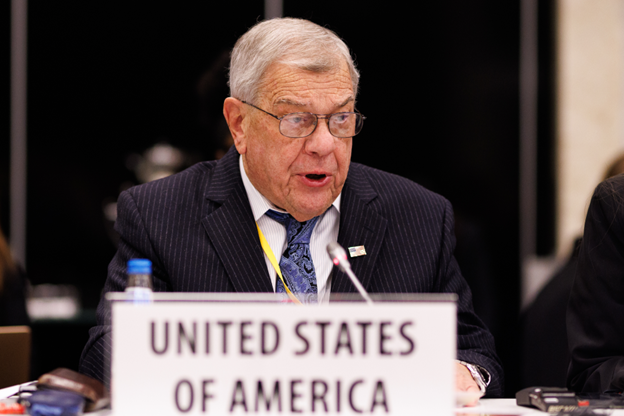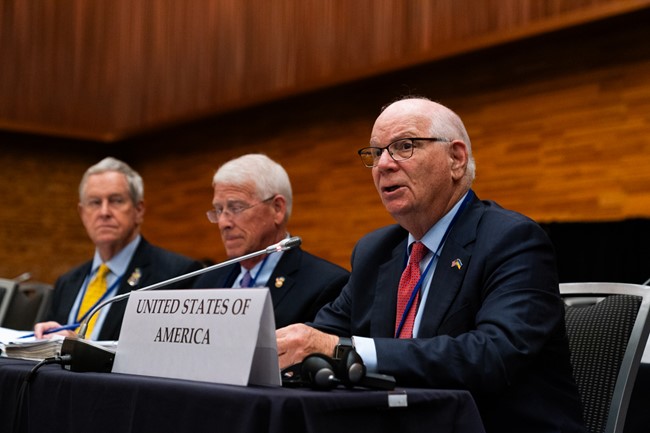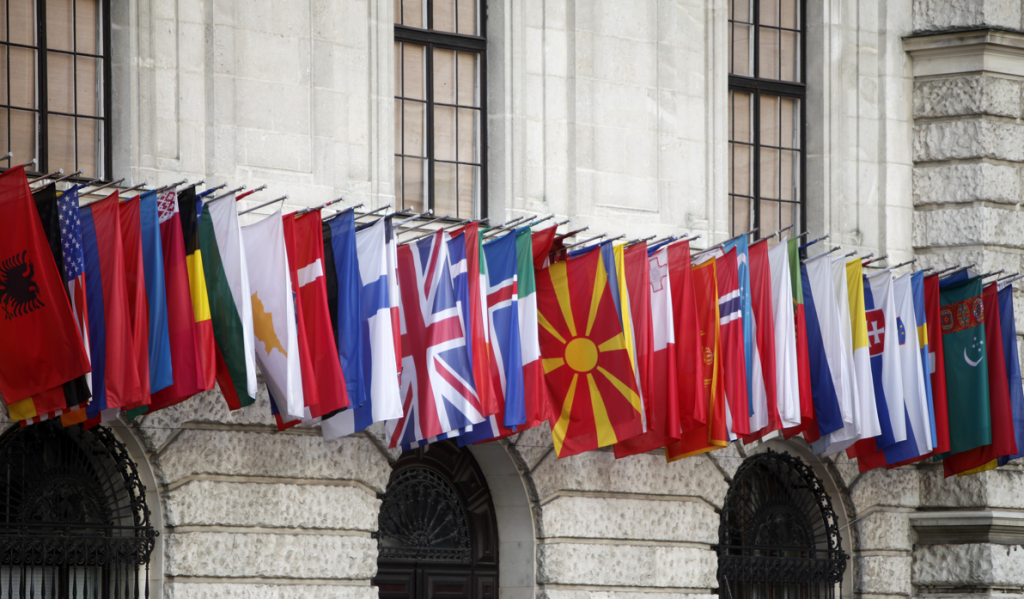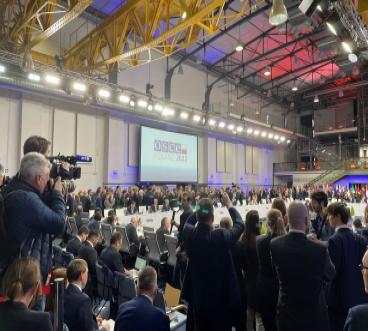Dr. Terry Hopmann is one of few American academics who has followed the Helsinki Process as it developed over four decades from a multilateral conference of 35 countries dealing with Cold War divisions – the Conference on Security and Cooperation in Europe – to a regional organization of 57 countries confronting a broad range of challenges across its security, economic and human dimensions – today’s Organization for Security and Cooperation in Europe (OSCE).
As well-acquainted with the intricacies of its institutional 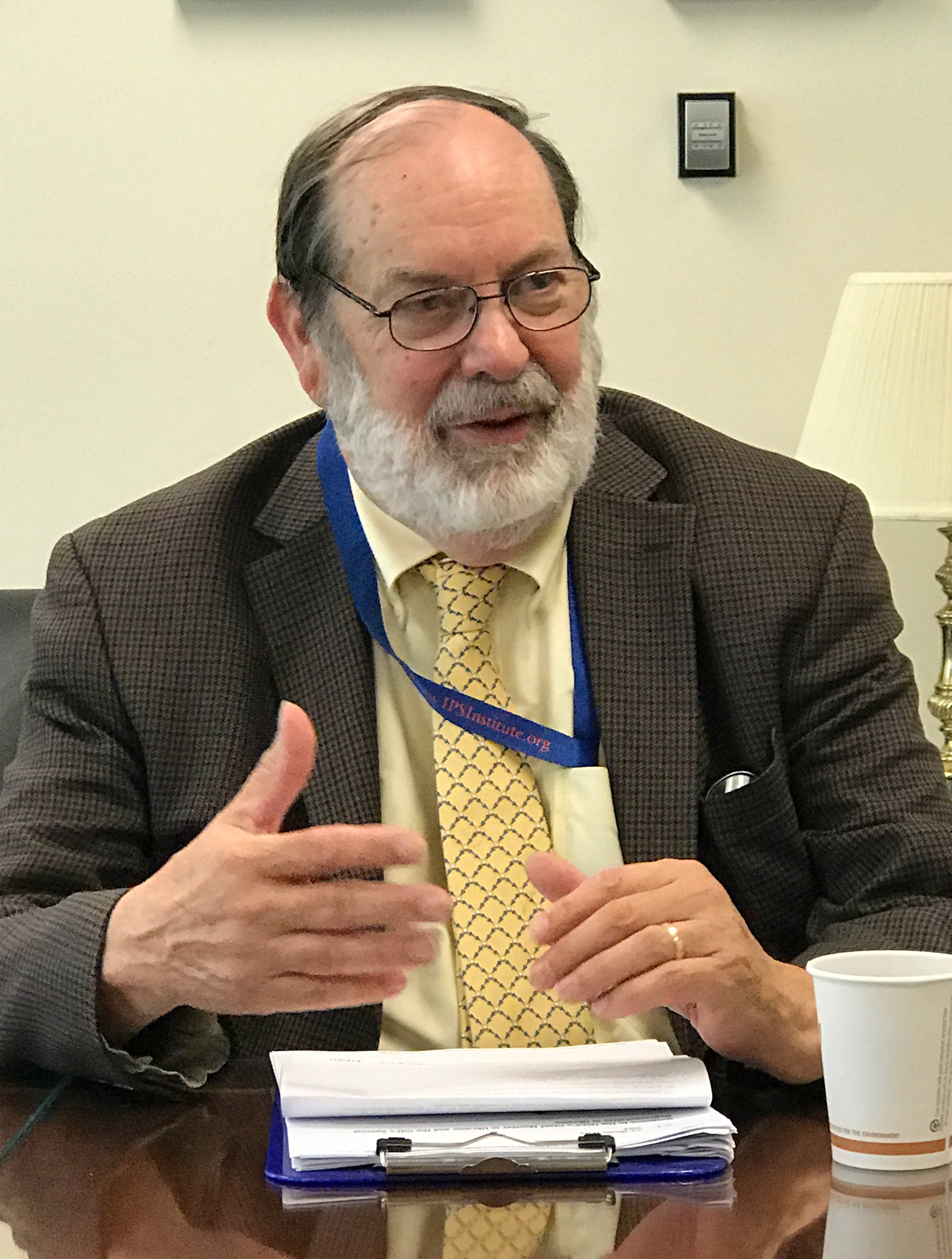 development as the diplomats who negotiated them, Hopmann also considers the Helsinki Process and its importance in the context of the broader development of European affairs and the U.S.-Russian relationship. In his current capacity as Professor of International Relations and Conflict Management at the Johns Hopkins School of Advanced International Studies (SAIS), based in Washington, DC, Hopmann not only introduces the OSCE to graduate students preparing for a career in international relations but also invites them to contribute to the intensive study of OSCE-related hot spots, including through field visits to areas such as Ukraine and Nagorno-Karabakh.
development as the diplomats who negotiated them, Hopmann also considers the Helsinki Process and its importance in the context of the broader development of European affairs and the U.S.-Russian relationship. In his current capacity as Professor of International Relations and Conflict Management at the Johns Hopkins School of Advanced International Studies (SAIS), based in Washington, DC, Hopmann not only introduces the OSCE to graduate students preparing for a career in international relations but also invites them to contribute to the intensive study of OSCE-related hot spots, including through field visits to areas such as Ukraine and Nagorno-Karabakh.
Focusing especially on security issues, Dr. Hopmann frequently interacts with the Helsinki Commission, both at OSCE-organized meetings in Europe and at Commission-organized briefings and hearings in Washington. In light of the numerous challenges the OSCE currently faces, including Russia’s markedly aggressive behavior and fears of an eroding U.S. commitment to European security and cooperation, Helsinki Commission staff recently sought Hopmann out to discuss the utility of the Helsinki Process in the past, and the interplay of U.S., Russian and European interests through the OSCE today and into the future.
The OSCE’s Value
Hopmann asserts in no uncertain terms that “OSCE membership is very beneficial for the United States.” The organization has made major contributions to defusing conflicts and increasing military transparency, Hopmann believes; he also underlines the need to keep in mind the organization’s role in the defense of human rights.
“The OSCE’s defense of national sovereignty, minority rights, and other important socio-political freedoms, together help prevent or at least de-escalate conflict, and make escalation harder. We see this precise action with regards to Ukraine right now. There’s a lot of value in that,” he notes.
“The OSCE remains important for the U.S. in promoting its interests abroad, and at relatively low cost,” Hopmann adds. “Still, the OSCE needs more support. The United States has struggled to engage with multilateral organizations and this represents a major issue. Without permanent and knowledgeable diplomatic representation and without the guarantee of adequate funding and resources, the OSCE’s capacity to act is severely hindered, and we play a role in that. Furthermore, the fact that we do not have a permanent representative there at the moment devalues the OSCE in ways that are dangerous.”
Hopmann calls for the United States to continue to “support the OSCE institutions and missions, help its fellow member states in their work at the OSCE, and not forget its commitment to the principles of the Helsinki Final Act, nor lose sight of their significance.”
In the past, the Helsinki Process made important contributions to stability and peace in Europe, Hopmann believes. The confidence-building measures developed through the Helsinki Process of the mid-1970s, in particular, “initiated the practice of international observation and greater transparency. As a result, states could now better distinguish military maneuvers and exercises from preparations for a surprise attack. In many ways this was the most important breakthrough during the Cold War, greatly reducing the risk for surprise attack from the Soviet Union. This anxiety was a root cause of the Cold War and animated the conduct of both Western and Eastern powers. Of course, there were the ideological arguments that influenced the political landscape, but in Europe, the fear of Soviet aggression was immense.” At the time these confidence-building measures were negotiated, the Soviet-led invasion of Czechoslovakia in 1968 was still a vivid, recent memory.
Hopmann also acknowledges the value of the other, non-military baskets of issues discussed in the Helsinki context.
“The human rights basket was also important, though not as immediate,” he observes. “For the negotiators, this basket was less about human rights, but more about the promotion of human interaction. It was, effectively, an agreement to begin encouraging cultural and educational exchange. In the shorter term, the first basket [on political-military issues] was critical, but in the longer term, the third basket [on human rights] became more important – particularly after the 1986 Stockholm agreement updated the CSBMs that were at the heart of Helsinki’s Basket 1. Then, following the Vienna Review Conference that concluded in early 1989, suddenly people were guaranteed the right to enter and leave their own country. Here, we see the first breach in the Iron Curtain when Hungary allowed people to cross freely into Austria – it didn’t all fall at once in 1989, rather it was a gradual process that started with a CSCE set of expanded principles. “
Hopmann considers the institutional development of the European security architecture in the post-Cold War period to have in many ways played out to the OSCE’s disadvantage. Although initially successful in the 1990s with the deployment of field missions, successive U.S. administrations have missed an opportunity by viewing the OSCE as an organization principally relating to human rights concerns, rather than political-military security.
“We missed the idea that NATO and the OSCE are not mutually exclusive,” he says “While we’ve contributed a lot to the OSCE, NATO remains the priority for policy makers in Washington. We have yet to realize how closely and effectively they can and should be working together. I believe this is our biggest foreign policy mistake since the end of the Cold War. It is the most effective way to bring Russia to the negotiating table and it is far easier to work with them in Vienna than the UN. The OSCE remains a security institution, like NATO, and as long as we value using all diplomatic measures to resolve conflict before using military force, we’re making a mistake by underutilizing the OSCE.”
A growing European Union has not necessarily helped, Hopmann believes.
“The development of the E.U. has somewhat complicated the operation of the OSCE. Through the creation of its own common foreign and security policy and other initiatives, Brussels has duplicated OSCE institutions, but without the participation of the United States and Russia. Thus, the E.U. alone simply isn’t as effective,” he observes. “There is a lot of overlap between the two bodies and this begets structural and bureaucratic blockages that prevent action, especially when E.U. and OSCE representatives diverge or try to do the same thing independently. So, like OSCE-NATO relations, the E.U.’s relationship with the OSCE is occasionally marked by competition that hurts both parties’ effectiveness.”
The View from Kremlin Walls
Many of the earlier successes of the Helsinki Process were enabled by a very different leadership in Moscow than that we see today, Hopmann suggests. Under the late-Soviet leadership and Russian President Yeltsin, “there was a real interest to engage more with the West. They were, generally speaking, in support of Helsinki and didn’t view it as a threat to Russian interests,” he says. “That strongly contrasts with Putin. Putin has a totally different worldview and perceives the OSCE’s interests as inimical to Russian national priorities. We now find a much stronger, more belligerent Russia that no longer trusts the OSCE to help protect its interests, as it once did.”
This dynamic creates a real danger that Russia could turn away from the OSCE completely. “The Kremlin could decide to leave as a result of domestic pressure or as a result of frustration with the West and its criticism. The Russians feel that they are attacked on all sides in the OSCE and obviously derive no joy from it,” Hopmann notes.
He therefore warns against outright rejection of all Russian concerns in the OSCE area, for instance as regards ensuring the protection of Russian-speaking populations in neighboring states.
“It is paramount that, in the spirit of Helsinki, we ensure Russian minorities are treated equally and fairly, to avoid perceived provocations by the West that might serve as a pretext for Russia to intervene. He suggests the closure of earlier OSCE missions in the Baltic states might have been perceived by Moscow, rightly or wrongly, as evidence that the OSCE was no longer responding to Russian concerns.
Russia’s military occupation and subsequent illegal annexation of Crimea might have been averted, Hopmann asserts, had its view of the OSCE not evolved so dramatically from the first post-Cold War decade to the second. While objecting to Kosovo’s bid for statehood based on core OSCE commitments regarding the sovereignty and territorial integrity of states, even a decade ago Moscow was willing to engage diplomatically to resolve the issue. In the case of Crimea in 2014, it was not.
“They prioritized military force over diplomacy – the precise kind of behavior the OSCE was designed to discourage,” Hopmann states. He predicts that “while this decision may have been tactically effective, it will hurt Russia in the long run. The OSCE is designed to deal with these situations and it has the institutional framework to do so effectively – Russia failed to take advantage of the OSCE and we’re all now paying the price.”
Still, Moscow recognizes that the OSCE is still valuable to Russian interests, according to Hopmann: “Russia wields a lot of influence in the OSCE because of their effective veto power under the consensus rule – indeed, the Kremlin recognizes the sway it carries in it and recognizes the OSCE as the place where it can effectively and discreetly negotiate with both the U.S. and the E.U. Ultimately, the OSCE is designed precisely to facilitate this kind of diplomatic interaction, and it meshes more closely with Putin’s view of how diplomacy should be conducted than the U.N. I believe it is for this reason that the Russians have been willing to work with the OSCE on some issues, including the conflict in Ukraine.”
Effectively engaging Russia at the OSCE will remain a challenge, Hopmann adds, suggesting that a multilateral format may be useful.
“The most important question we face is how to continue the discussion and being firm with Russia when it blatantly violates OSCE norms as it did in Ukraine, without going overboard with our criticisms,” he says. “There are some countries, like Austria, Finland and Switzerland that are simply better at dealing with Russia, due to their past or current neutrality. Russia prefers to deal through them and likely finds it easier to appear to cooperate with them than working directly with the U.S.”
On the OSCE’s Role in Conflicts
The OSCE is demonstrating clear added-value in conflict areas today, according to Hopmann, including in and around Ukraine, and as regards the Nagorno-Karabakh conflict.
Hopmann praised the OSCE as having “played a key role in ensuring the [Ukraine] conflict does not escalate and cause more destruction. Indeed, within the limits of its mandate and available resource, the OSCE has done admirable work; however, this scope is limited and much remains to be done. Thus, the best thing the U.S. can do is to continue to support the OSCE’s mission and the Minsk process. It’s not ideal, but there’s no better option.”
Frustration over the OSCE’s inability to overcome the absence of political will to prevent or stop the conflict altogether should not overshadow its success in ascertaining the facts on the ground and galvanizing a defense of key principles guiding international behavior, he believes.
Regarding Nagorno-Karabakh, Hopmann suggests that the OSCE has moderated what could otherwise be a much more intense conflict.
“The presence of the OSCE has helped already,” he says. “Its presence helped diffuse the four day war last year and prevented it from becoming a more violent conflict. Still, there is significant risk that the conflict will escalate and this highlights the importance of OSCE and the role it may play in resolving the Nagorno-Karabakh question.”
Hopmann believes that an alignment of U.S.-Russian interests in Nagorno-Karabakh, even if partial, may be helpful here. “The OSCE absolutely has the mandate and ability to negotiate such a deal and to organize peace-keeping initiatives to ensure the conflict does not start up again. That being said, this process will be long, complicated, and expensive,” he predicts.
The Future
Hopmann concedes that the OSCE will remain beset for the foreseeable future with challenges largely emanating from the consensus-based decision-making process, over which any one country (including Russia) effectively has a veto.
However, he remains convinced that “that doesn’t mean we shouldn’t continue dialogue. In fact, we must continue dialogue. Many people remain committed to the OSCE and its values, including some Russian diplomats – though they’re keeping a low profile at the moment. This bodes well not only for change in the OSCE, but also for Russia. Change is not impossible, and keeping the dialogue channels open is of incredible importance. Without them, when the chance to encourage positive change does appear, we will not be able to capitalize on it. We worked together immediately after the Cold War to diffuse East-West tensions and ensure a peaceful Europe. There is no reason we cannot do that again.”
Professor Hopmann was interviewed by Bob Hand and Alex Tiersky, Helsinki Commission Staff.

